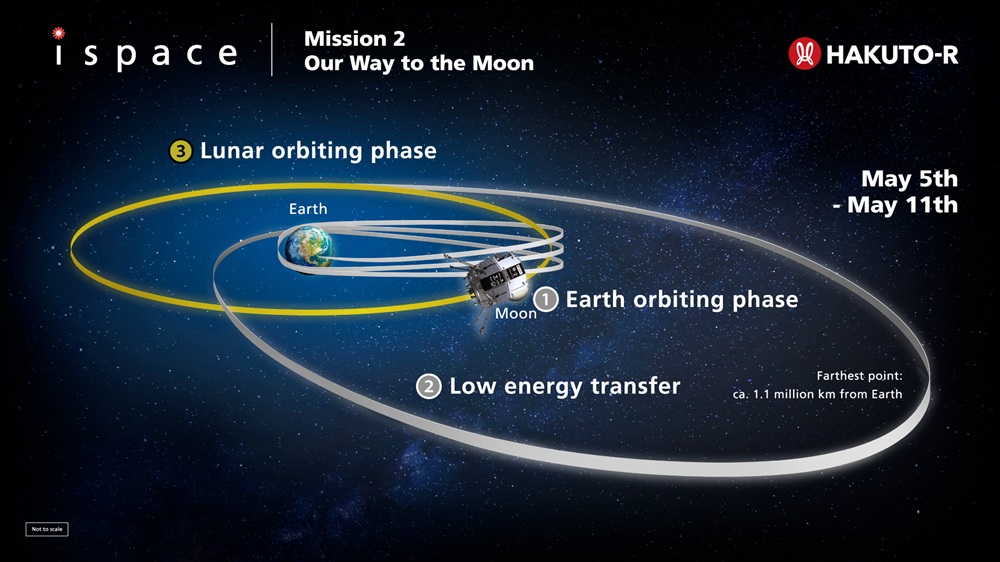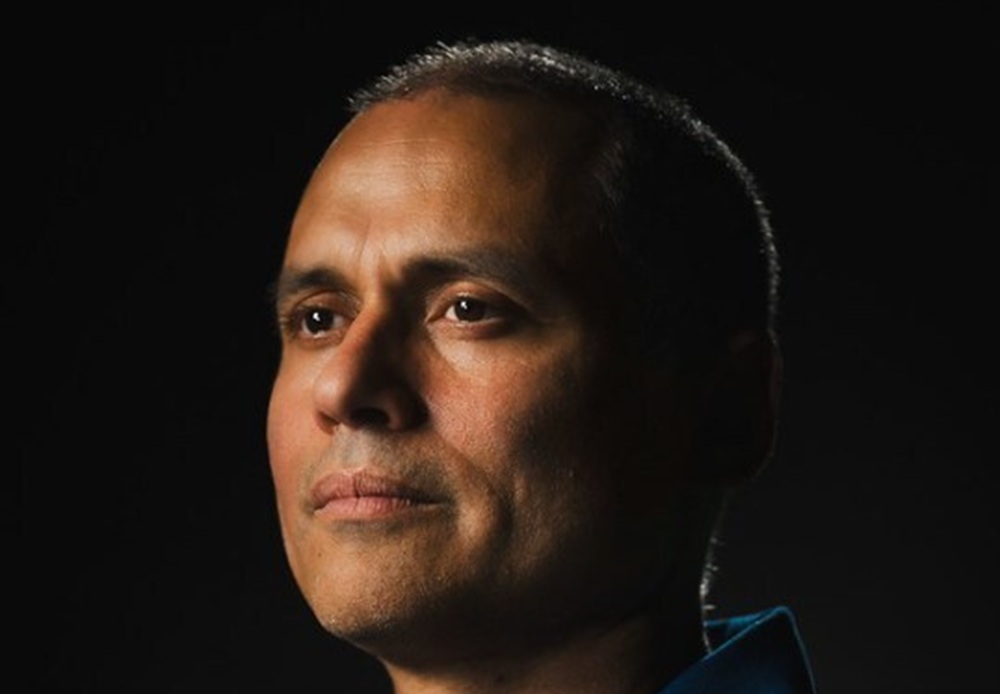TOKYO: In a significant leap for private lunar exploration, ispace, inc., the Tokyo-based global lunar resource development company, announced that its RESILIENCE lunar lander successfully entered lunar orbit on May 7, 2025, at 5:41 a.m. JST (May 6, 2025, 20:41 UTC), marking the completion of the critical Success 7 milestone of its Mission 2 “SMBC x HAKUTO-R Venture Moon” initiative.
The orbital insertion maneuver was expertly executed from ispace’s Mission Control Center in Nihonbashi, Tokyo. It involved a precise main thruster burn lasting approximately nine minutes-the longest and most complex burn so far in the mission-allowing RESILIENCE to stabilize in its planned orbit above the Moon’s surface. This achievement confirms ispace’s capability to deliver spacecraft and payloads into lunar orbit, setting the stage for the final approach and landing attempt scheduled no earlier than June 5, 2025 (UTC) (June 6, 2025, JST).
Takeshi Hakamada, Founder and CEO of ispace, expressed pride in the team’s accomplishment: “We are extremely pleased that the RESILIENCE lander successfully reached lunar orbit as planned today. Leveraging operational experience from our previous Mission 1, we have completed the most critical maneuver. We will continue with careful operations and thorough preparations to ensure the success of the lunar landing”.
Launched atop a SpaceX Falcon 9 rocket from Florida’s Space Coast on January 15, 2025, at 6:11:39 UTC, RESILIENCE began its ambitious journey to the Moon. After deployment from the rocket at 7:44:24 UTC the same day, the lander completed Earth orbit insertion (Phase 1), followed by a lunar flyby maneuver (Success 5), which verified the main propulsion and guidance systems. Subsequently, RESILIENCE entered a low-energy transfer orbit, spending approximately two months in deep space, traveling as far as 1.1 million kilometers from Earth before returning to the Moon’s vicinity for orbit insertion.
The successful orbit entry follows the completion of all deep space orbital maneuvers on April 24, 2025, at 10:00 UTC, which brought the lander from deep space back to lunar orbit. The mission’s complex trajectory and maneuvers demonstrate the robustness of ispace’s propulsion, navigation, and control systems, critical for the upcoming lunar descent and surface operations.
ispace has established a transparent set of Mission 2 Milestones to track progress between launch and landing. Each milestone’s success criteria are rigorously evaluated to incorporate lessons learned into future missions. Mission 2 is part of the broader HAKUTO-R lunar exploration program, designed to advance lunar transportation and surface exploration technologies while fostering international collaboration.
The company’s upcoming missions include Mission 3, featuring the APEX 1.0 lunar lander developed by ispace-U.S., scheduled for launch in 2026, and Mission 4, which will utilize the Series 3 lander currently under design in Japan, targeting a 2027 launch. These missions aim to build on the technological and operational experience gained from Mission 2 to establish sustainable lunar exploration and resource utilization capabilities.
The RESILIENCE lander carries a suite of commercial and scientific payloads from international partners, reflecting ispace’s commitment to multi-disciplinary lunar exploration and cultural outreach:
- Water Electrolyzer Equipment from Takasago Thermal Engineering Co., designed to demonstrate in-situ resource utilization technologies by producing oxygen and hydrogen from lunar water ice.
- Food Production Experiment: A self-contained module from Euglena Co. aimed at testing biological processes for sustainable food generation in extraterrestrial environments.
- Deep Space Radiation Probe: Developed by the Department of Space Science and Engineering at National Central University, Taiwan, to study the lunar radiation environment.
- Commemorative Alloy Plate: Created by Bandai Namco Research Institute, Inc., modeled after the “Charter of the Universal Century” from the iconic Mobile Suit Gundam UC animation, symbolizing cultural heritage.
- TENACIOUS Micro Rover: Developed by ispace-Europe, this compact rover (approximately 26 cm tall, 31.5 cm wide, and 54 cm long, weighing about 5 kg) is equipped with a forward-mounted HD camera and a shovel. TENACIOUS will explore the landing site, collect lunar regolith samples, and relay data back to the lander, conducting technological demonstrations of mobility and resource extraction on the lunar surface.
- Moonhouse: A model house by Swedish artist Mikael Genberg, mounted on the rover, serving as a cultural artifact.
- UNESCO Memory Disk: Carried aboard RESILIENCE, this disk preserves linguistic and cultural diversity as a symbolic gesture of humanity’s shared heritage.
ispace’s global footprint spans Japan, the United States, and Luxembourg, enabling simultaneous development of multiple missions. Mission 2, led by ispace Japan, leverages expertise and resources from its European subsidiary, which developed the TENACIOUS micro rover with support from the Luxembourg Space Agency and the European Space Agency (ESA). This international collaboration exemplifies the growing trend of cross-border partnerships in commercial space exploration.
With RESILIENCE now securely in lunar orbit, ispace’s mission operations team is focused on final orbit adjustments and preparations for the lunar descent. The targeted landing site is Mare Frigoris, a vast plain in the Moon’s northern hemisphere, chosen for its scientific interest and operational feasibility. The landing window opens no earlier than June 5, 2025 (UTC), initiating a critical phase that, if successful, will mark ispace as the first Japanese company-and one of the few private companies worldwide-to achieve a soft lunar landing.
The mission aims not only to demonstrate new lunar technologies but also to contribute valuable scientific data and cultural artifacts to the global community. Success will pave the way for more frequent, cost-effective lunar transportation and exploration services, aligning with ispace’s vision to “Expand our planet. Expand our future.”
This milestone represents a pivotal moment in the private space sector’s race to the Moon, highlighting the increasing capabilities of commercial entities to undertake complex interplanetary missions. As RESILIENCE prepares for its descent, the world watches closely, anticipating a successful landing that could open new frontiers in lunar exploration and resource development.





![Artist's rendering of Moonraker, a smallsat mission that will map the lunar poles in unprecedented detail and de-risk future landing sites. [Credit: NUVIEW]](https://spacenewscast.com/wp-content/uploads/2025/06/Moonraker_Satellite_Rendering.jpg)